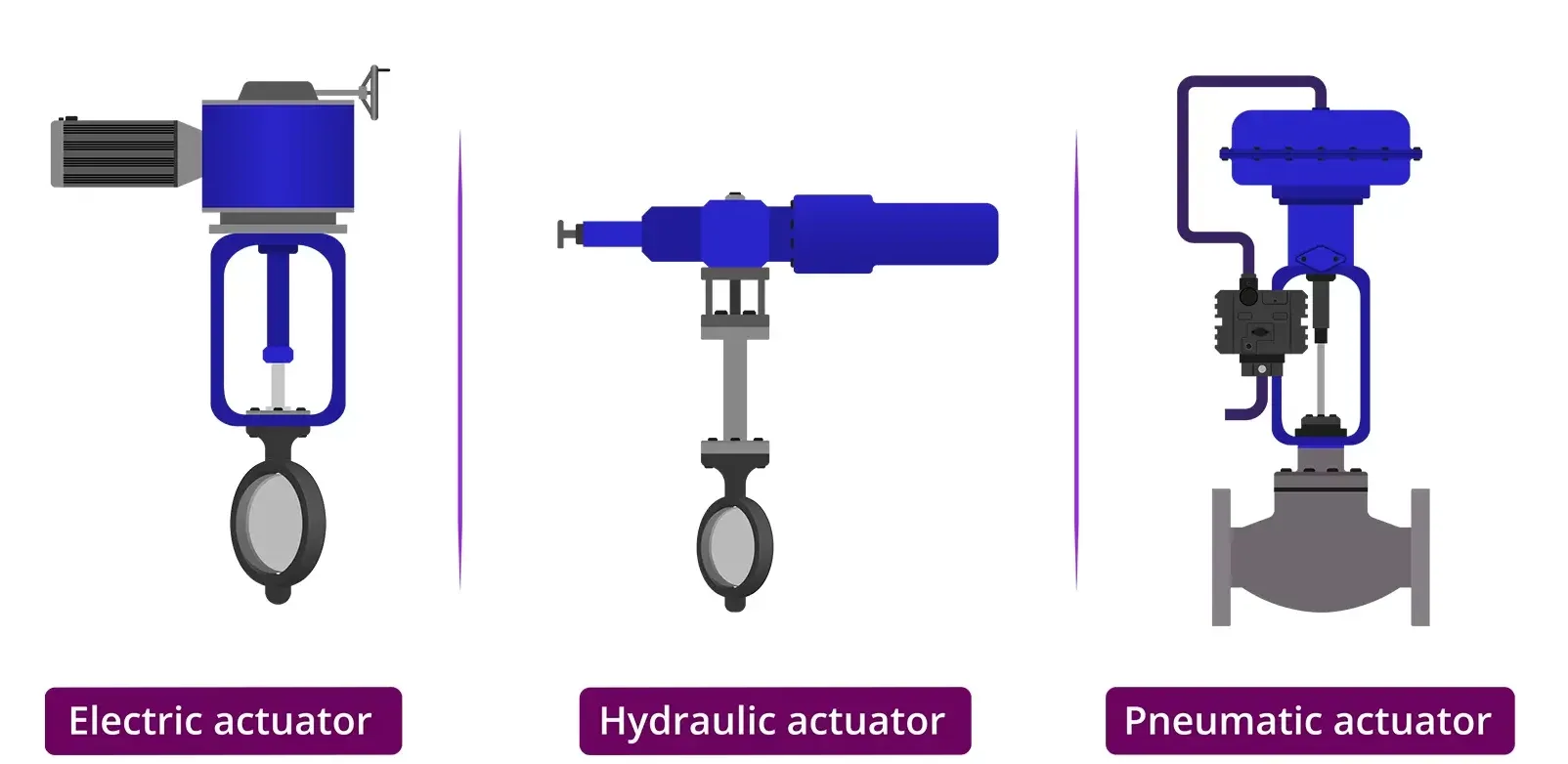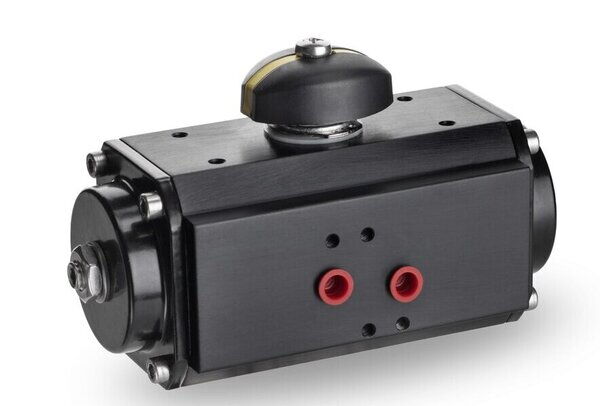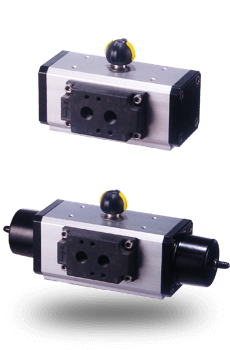Pneumatic valve actuators play a crucial role in industrial automation, enabling precise control over valves by converting the energy from compressed air into mechanical motion. These actuators are essential components in various industries, where they automate the opening, closing, or modulating of valves in a wide range of systems. This article provides an in-depth exploration of pneumatic actuators, their types, how they work, their advantages, and their applications across industries.

A pneumatic actuator is a device used to move or control a valve using compressed air or gas as its power source. The actuator consists of a piston housed within a cylinder. When pressure is applied to one side of the piston, it creates a force that moves the piston along the cylinder’s axis, translating that motion to the valve stem. The actuator can be designed to fully open, close, or modulate the valve’s position. Pneumatic actuators are commonly used for applications requiring fast and reliable control valve operation, such as in controlling flow, pressure, or temperature in automated systems.
The key advantage of pneumatic actuators lies in their simplicity and speed, making them suitable for high-cycle applications where rapid valve movement is required. Additionally, pneumatic actuators are inherently fail-safe, which adds a layer of reliability and security in critical operations.

Pneumatic actuators can be classified into two main types based on their motion and design: rotary actuators and linear actuators. In this section, we will focus on rotary pneumatic actuators, which are widely used for valves such as ball, butterfly, and plug valves.
Rotary pneumatic actuators are primarily used for applications where the valve stem requires rotational motion. There are two main mechanical styles of rotary actuators used in valve automation: Rack-and-Pinion and Scotch Yoke actuators. While they may appear quite different, both designs serve a similar purpose: converting the linear motion of the piston into rotational motion to operate the valve.
The rack-and-pinion actuator is one of the most common types of rotary pneumatic actuators. It consists of a piston connected to a rack, which engages with a pinion gear. When air pressure is applied to the piston, the rack moves linearly, rotating the pinion gear, which, in turn, rotates the valve stem. The rotational motion generated is ideal for valves that require a full 90-degree turn, such as ball valves and butterfly valves.
The Scotch Yoke actuator employs a different mechanism for converting linear motion to rotary motion. It consists of a piston connected to a yoke, which in turn drives a rotating crankshaft. As the piston moves, the yoke moves linearly, causing the crankshaft to rotate. This type of actuator is often used when a more consistent rotational speed or high torque is required, making it suitable for applications where precise control over the valve position is necessary.

Pneumatic actuators can also be classified based on how they operate:
A double-acting actuator uses compressed air to move the piston in both directions. Air pressure is applied to one side of the piston to move it in one direction, and when the direction needs to be reversed, air is applied to the opposite side. This mechanism ensures that the actuator has full control over both opening and closing motions of the valve. Double-acting actuators are often preferred for applications requiring precise control and rapid actuation.
In contrast to double-acting actuators, spring-return pneumatic actuators rely on a spring to return the actuator to a default position when air pressure is removed. When air is applied to one side of the piston, it moves in the desired direction. Once the air pressure is vented, the spring on the opposite side of the piston forces it back to its original position. Spring-return actuators are commonly used for fail-safe applications where the valve needs to return to a "safe" position in case of air loss or power failure.
Pneumatic actuators operate using compressed air or gas, which drives a piston inside a cylinder. When air pressure is applied to one side of the piston, the force generated causes the piston to move along the cylinder’s axis, transferring this motion to the valve. This mechanism allows the valve to open, close, or modulate its position based on the control system.
The Process:
When compressed air is introduced into the actuator, it exerts pressure on one side of the piston, generating a force that moves the piston within the cylinder.
The movement of the piston translates into linear motion, which can be used to control the valve’s stem position. In rotary actuators, this linear motion is converted into rotational motion to operate the valve.
Depending on the actuator type, the piston can return to its original position in one of two ways: using a spring in a spring-return actuator or by applying air pressure to the opposite side of the piston in a double-acting actuator.
This simple yet effective design allows pneumatic actuators to perform efficiently in a wide range of applications, especially those requiring fast and reliable valve actuation.
Pneumatic actuators offer several key advantages over other types of actuators, such as electric or hydraulic actuators. These advantages make them a popular choice for valve automation in various industries.
One of the main advantages of pneumatic actuators is their fail-safe functionality. In the case of a power or air supply failure, spring-return pneumatic actuators are designed to return the valve to a predefined “fail-safe” position. This ensures that the valve will either open or close automatically, preventing potential damage or unsafe conditions. For example, in critical applications like safety systems or emergency shutdowns, a fail-safe mechanism is essential to maintain operational integrity.
Pneumatic actuators are known for their fast actuation times, making them ideal for high-speed applications. The response time of pneumatic actuators is much quicker compared to electric actuators, as compressed air can move the piston with minimal delay. This quick actuation cycle is especially important in industries like chemical processing, oil and gas, and water treatment, where timely control over valves is crucial.
Pneumatic actuators are inherently safer for use in hazardous environments compared to electric actuators. Since they are powered by compressed air, there is no risk of sparks, making them safe for explosive atmospheres. This makes pneumatic actuators suitable for applications in the oil and gas, mining, and chemical industries, where safety is a top priority. Additionally, pneumatic actuators are better suited for high-temperature environments, provided that high-temperature seals are used.
Pneumatic actuators are designed to operate continuously without overheating, making them ideal for high-cycle applications. The ability to perform well under rapid cycling conditions means that pneumatic actuators can handle high-frequency valve movements, which is particularly valuable in applications such as material handling, food and beverage processing, and water treatment.
Pneumatic valve actuators are widely used across various industries for automating the control of valves. Some common applications include:
In the oil and gas industry, pneumatic actuators are used to drive valves that regulate and isolate flow in pipelines, refineries, and storage facilities. They play a key role in safety, flow control, and pressure regulation.
Pneumatic actuators are commonly used in the mining industry to control valves that regulate pressure and flow in rock washing lines, dust control systems, and other operations that require high-pressure and high-temperature handling.
In water and wastewater treatment plants, pneumatic actuators are used to control valves that isolate and regulate the flow of drinking water, as well as to control sand filters and tank levels. Pneumatic actuators ensure that critical systems function smoothly, maintaining water quality and safety standards.
Pneumatic actuators are used in the food and beverage industry for controlling valves in mixing, packaging, and processing systems. Their fast and reliable operation ensures that production lines run efficiently.
In chemical plants, pneumatic actuators are used to control valves for regulating flow, pressure, and temperature in reaction vessels, mixers, and pipelines, ensuring safe and efficient chemical processes.
Pneumatic valve actuators offer a fast, reliable, and cost-effective solution for automating the control of valves in a wide range of industries. Their ability to operate in hazardous and high-temperature environments, combined with their fail-safe functionality and high-duty cycle capabilities, makes them an ideal choice for critical applications. By understanding the various types of pneumatic actuators and their working principles, industries can select the best actuator for their specific needs, ensuring optimal performance, safety, and reliability.
